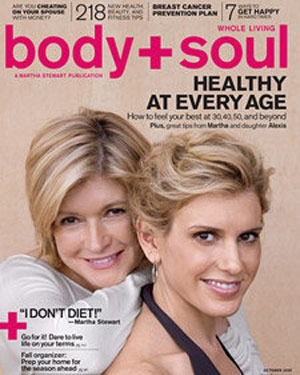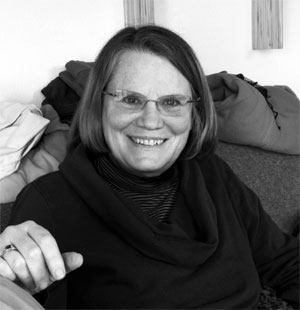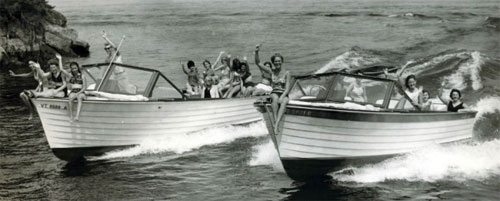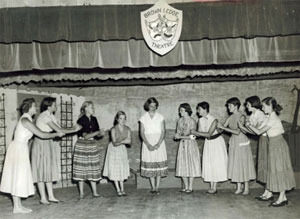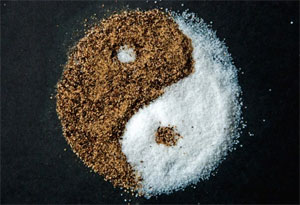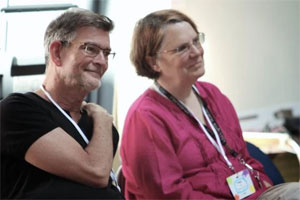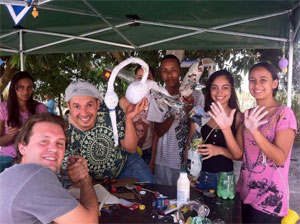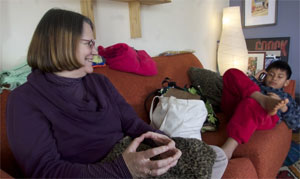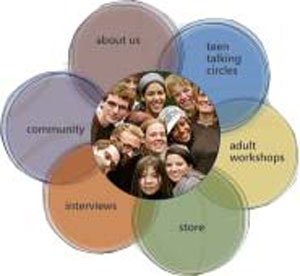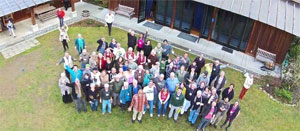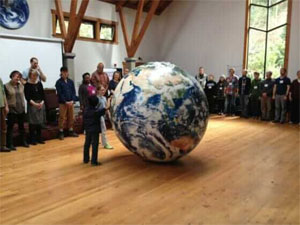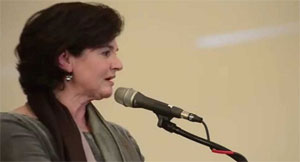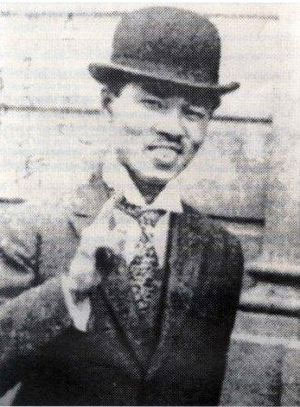Zen Macrobiotics: the art of rejuvenation and longevityby George Ohsawa
edited by Carl Ferré
NOTICE: THIS WORK MAY BE PROTECTED BY COPYRIGHTYOU ARE REQUIRED TO READ
THE COPYRIGHT NOTICE AT THIS LINK BEFORE YOU READ THE FOLLOWING WORK, THAT IS AVAILABLE SOLELY FOR PRIVATE STUDY, SCHOLARSHIP OR RESEARCH PURSUANT TO 17 U.S.C. SECTION 107 AND 108. IN THE EVENT THAT THE LIBRARY DETERMINES THAT UNLAWFUL COPYING OF THIS WORK HAS OCCURRED, THE LIBRARY HAS THE RIGHT TO BLOCK THE I.P. ADDRESS AT WHICH THE UNLAWFUL COPYING APPEARED TO HAVE OCCURRED. THANK YOU FOR RESPECTING THE RIGHTS OF COPYRIGHT OWNERS.
George Ohsawa Macrobiotic Foundation Chico, California
Other books by George Ohsawa in English include: The Art of Peace; Cancer and the Philosophy of the Far East; Essential Ohsawa; Four Hours to Basic Japanese; Gandhi, the Eternal Youth; Jack and Mitie; Macrobiotic Guidebook for Living; Macrobiotics: An Invitation to Health and Happiness, Order of the Universe; Philosophy of Oriental Medicine; The Unique Principle; and You Are All Sanpaku. Contact the publisher at the address below for a complete list of available titles.
First (Mimeograph) Edition 1960
Second Edition 1962
Third (Oles) Edition 1965
Fourth Edition 1995
Fifth Edition, slight edits and index added 2013 Jul 1
© copyright 1995 by George Ohsawa Macrobiotic Foundation
PO Box 3998, Chico, California 95927-3998
530-566-9765; fax 530-566-9768
[email protected];
http://www.OhsawaMacrobiotics.comPublished with the help of East West Center for Macrobiotics
http://www.EastWestMacrobiotics.comISBN 978-0-918860-73-6
Preface to the Latest Editionby Carl Ferré
For the past fifty years many people have purchased, read, and been inspired by what has become known as “the flame of macrobiotics.” The third edition of Zen Macrobiotics by George Ohsawa was published by the Ohsawa Foundation in 1965 and was revised, edited, and annotated by Lou Oles and Shayne Oles Suehle. Thanks to their efforts Zen Macrobiotics contains some of Ohsawa’s strongest and most direct suggestions for rejuvenation and longevity.
When we became aware in 1995 that the seemingly endless supply of copies of the third edition had all been sold, we planned to reprint it in the same successful edition and format. However, Herman Aihara, founder and president of the George Ohsawa Macrobiotic Foundation, wanted some misconceptions arising from the Oles edition corrected. He showed me a copy of the original mimeograph edition that Ohsawa himself printed in New York City in 1960. Following this edition, Librarie J. Vrin published Le Zen Macrobiotique in French in 1961. There also was a second English edition of Zen Macrobiotics between the mimeograph and Oles editions.
A careful reading of each edition showed that the Oles edition greatly improved the mimeograph edition and that there were two major differences. First, there were many sections added to the Oles edition from other Ohsawa writings. Since they have been part of Zen Macrobiotics for so long, we decided to leave them in the fourth edition. For those interested, the major parts added were the seventh condition of health added to chapter three, the entire chapter on yin-yang theory, most of the chapter on macrobiotic food for infants, and the entire section of appendices.
The other major difference is more significant. The mimeograph edition contained 240 recipes, of which only 50 appear in the Oles edition. There are many references in the Oles edition of Zen Macrobiotics to recipes in Zen Cookery. However, Zen Cookery never did contain all the recipes; also, the numbering system was not consistent with the numbers referred to in Zen Macrobiotics. Thus a lot of confusion has existed for many years.
It is with great joy that we announce the return of all the recipes from the original mimeograph edition to the new Zen Macrobiotics. These recipes will be very helpful in developing any cook’s intuition; however, they are not designed for those beginning macrobiotic cooking. Often there are no quantities of ingredients given, no cooking temperatures, no length of cooking times, etc. Those new to macrobiotic food preparation should first study Basic Macrobiotic Cooking by Julia Ferré to learn the procedures of whole grain and fresh vegetable cookery. This book makes a fine addition to any cook’s library. Also, many of the recipes in this edition of Zen Macrobiotics are spelled out more completely in Zen Cookery, previously also published as The First Macrobiotic Cookbook.
The main reason we decided to print the recipes as found in the mimeograph edition is that they show a side of Ohsawa that is often missed. The recipes themselves show a great variety of possibilities, both in preparation style and in ingredients used. Further, it shows that Ohsawa’s main goals and objectives were freedom, peace, and happiness. He taught that the best way to achieve these goals is through health and the easiest way to health is through eating appropriate foods for one’s condition. Over the years much more emphasis has been placed on proper eating than on the true objectives of freedom and happiness.
The greatest misunderstanding from Zen Macrobiotics in all its editions has been generated by chapter five, Ten Healthful Ways of Eating and Drinking, in which Ohsawa clearly states the best way to health and happiness is by following diet number seven—grains only and as little as possible to drink. According to Herman Aihara, this advice would have been changed by Ohsawa once he understood Americans better. After all, Ohsawa came to the United States for the first time late in 1959 and wrote and published Zen Macrobiotics specifically for Americans early in 1960 without much knowledge of local customs. His dealings with the West were almost exclusively with the French.
Ohsawa told Herman that the French always cheated on their diets and that is why he recommended a number seven diet as the best. In this way he overstated the case so that they (the French) would eat more natural foods. Again, according to Herman, Ohsawa had no idea that Americans had the will power to eat only grains for unusually long periods of time.
Today, the most common advice is to use the restrictive diet number seven as a fast for a maximum of up to ten days, especially if recipes similar to those found in the Principal Food chapter are used. Noting that some of the dishes in that chapter contain vegetables, it is questionable whether diet number seven was ever intended to be grains only. And, we can be fairly certain that eating only brown rice for extended periods of time was never Ohsawa’s intention.
The misunderstanding over number seven diet in the 1960s led to some controversy. Zen authors objected to Ohsawa’s linking of the spiritual practice of Zen with such an austere and restrictive diet. Many people still believe used the term “Zen” to capitalize on its popularity at the time. However, Ohsawa’s intention may have been more fundamental. The original title of his manuscript was Macrobiotics: The Biological and Physiological Foundation of Zen Buddhism. Ohsawa wanted people to realize that theory and practice are equally important. Just as meditation is key in Zen practice, eating appropriate foods for one’s condition is central to one’s spiritual growth.
Liberty has been taken in changing book references to those available today and comments have been added in cases of changed macrobiotic opinion. These have been indicated by inserting bracketed material—[ed.]. In this way advice that is no longer commonly accepted macrobiotic practice can be left for reference with today’s opinion in brackets for your evaluation. Still, in the interest of space and time, minor changes made in the Oles edition that served only to improve the work have been left without annotation.
The fifth edition contains a new index thanks to the tireless work of Alice Salinero and Kathy Keller along with minor edits by Kathy. The editor’s notes also contain minor corrections.
Whether this is your first reading of Zen Macrobiotics or your second or greater, we are certain you will benefit as countless others have by “the flame of macrobiotics.”
Preface to the Third Editionby Shayne Oles Suehle
During his lifetime, George Ohsawa wrote more than 300 books and papers. This volume is considered the primer of the macrobiotic philosophy of Oriental medicine.
All of Ohsawa’s basic thought is herein touched upon. But to those previously unacquainted with macrobiotics and its many implications in the realms of ancient and modernized Oriental philosophy and science, perhaps the main thrust of the macrobiotic way of living is its rediscovery of ancient basic truths regarding health.
The general path of Western medicine, from the Greeks and Egyptians on to the giant research centers of the present, has been in the direction of seeking cures for disease. Oriental medicine, on the other hand, has for 5,000 years pursued a path whose goal has been the unity between the individual and “the way”—the way of nature herself, the eternal law governing all plants and creatures, the creation of an equilibrium between man and his biological destiny.
Western medicine has only recently begun turning its eyes toward this latter view, re-examining its own cure-oriented premise and gradually adapting its technology to ancient precepts of health. The amalgam of these two views is now known as “preventive medicine.”
Zen Macrobiotics, therefore, should be considered as a guidebook whose aim is happiness → through health → through nutrition.
In a period when the soil, water, and very air of this planet is being bombarded with contamination through technology, no single individual is immune from the ravages of being alive in the twentieth century. Under such a violent assault upon each person’s biological integrity, “preventive medicine” appears likely to be man’s best defense of his “biological castle,” his body.
Zen Macrobiotics, therefore, is presented to the reader as a last-best-hope. Health can be achieved. Health can be maintained. Man stands, precariously, between his dreams of a good world and his all-too-vulnerable mind and body.
It is the aim and hope of this book that each reader, by understanding its message, will find his own “way” to follow the dreams of his imagination through coming ever-closer to the biological dream of freedom from illness by preventing disease.
Forward: Two Ways to HappinessHappiness is the goal of everyone in this world. But, what is happiness in the Occident, or more particularly, in the United States?
Happiness was defined by Oriental sages some thousands of years ago as a state of being that is determined by five factors:
1. A joyfulness resulting from a healthy, productive, and exciting longevity;
2. The freedom from worry about money;
3. An instinctive capacity to avoid the accidents and difficulties that could cause premature death;
4. A loving realization of the order that governs the infinite universe; and
5. A deep comprehension of the fact that one must be last in order to become the first forever. This implies the abandonment of the goal of being the victor, the winner, or first-in-line in any situation since the attainment of this goal guarantees one’s being last eventually. Everything changes in business, politics, science, marriage, in all of life—there is always a new winner. That which is the height of fashion today is out-of-date tomorrow. The man of humility, he who has no fear of being last, therefore, knows a contentment that is the essence of happiness.
Oriental philosophy—biological, physiological, social, economical, and logical in its scope—teaches the practical way to achieve such happiness. It prohibits the explanation by any teacher of the deep significance of the structure of the infinite universe and its order. The student must discover this significance, the path to happiness, for himself. Accordingly, there are no theoretical discussions, only practical ones. Schools and professional education are considered unnecessary, the makers of slaves. Further, the slave mentality is clearly seen as the cause of all misery and unhappiness. (It is interesting to note that the majority of great men have been autonomous— self-made.)
In this guidebook, I have avoided a complete explanation of the yin-yang philosophy of happiness, of the concept of supreme judgment and the keys to the kingdom of heaven for two reasons. First, so many works have already been written on the subject,1 and second, the intellectual/conceptual understanding of such philosophy is utterly useless if there is no practical result. To theorize is not enough; one must actually achieve a happy life that continually grows fuller.
The swimming of even the smallest fish cannot be mastered without first getting into the water. If you are interested in and excited by the Oriental philosophy that guarantees the five elements of happiness outlined above, please try the macrobiotic technique in this volume for a week or two. I can still recommend it after having taught it for more than forty-eight years; I am convinced that it is the fundamental way to happiness. The alternate way via philosophical, intellectual, conceptual, theoretical study is difficult, tiresome, endless, and disappointingly fruitless.
Above all, remember that this philosophy, that which I have called the Unique Principle, is practical. It is not merely another one of the medical methods that pretends to restore bodily health while actually increasing the number of sickly, diseased people through endlessly new pharmaceutical products and surgical operations. It is simply a practical discipline of life that anyone can observe with great pleasure. It restores both the health and the harmony of soul, mind, and body that are essential for joyful living.
Preface to the First Edition: From Health to PeaceAll the great religions of man were born in the Orient—the light from the East. Thanks to them, the people of that part of the world lived for thousands of years with relatively few cruel wars. (This included the Japanese, whose country had always been called the land of longevity and peace.)
Yet, everything changes in this ephemeral, floating, relative, and limited world that we inhabit. With the importation of Occidental civilization, Asiatic and African countries that had been colonized gave up their traditional ways and naively and peacefully adopted the manner of the West.
Western civilization has since grown more powerful; war has progressively become more violent while modern science, which we admire very much, has emerged as the new religion of man.
May we hope that both this strikingly new, productive civilization and the ancient civilization of health, freedom, happiness, and peace will become complementary—the two arms of oneness?
For forty-eight years my goal has been to accomplish just this, and at last I think I have found the way.
You in the Occident should study our five-thousand-year-old philosophy. With this dialectical, paradoxical, non-violent tool you will be able to solve not only scientific, social, and medical problems, but you will discover the way to achieve happiness and freedom. Study and reach an understanding of our simple, practical, and stimulating viewpoint. Remember, we imported everything from the West for more than one hundred years, sometimes voluntarily and sometimes not; it is now time for you to import this ageless, priceless treasure from the East.
First of all, learn about Eastern eating and drinking— macrobiotics, the structural basis for health and happiness.2
In Japan, for example, eating and drinking were once considered to be the most divine art of life. Whereas we, on the one hand, developed a method based on thought-out, well-established principles, Americans, on the other hand, appear to be guided only by taste and pleasure in their food habits.
Macrobiotics is the fundamental way of eating and drinking in the Zen Buddhist monastery where it is called “Syozin Ryori,” the cooking that develops the supreme judgment. This is consistent with the belief that physiology precedes and determines psychology. By contrast, what is customarily served in Chinese and Japanese restaurants in the United States appeals to the low, sensory judgment; it completely eclipses higher judgment. The true masters of Oriental cooking can prepare food according to macrobiotic principles that not only tastes delicious but also creates health and happiness.
You, too, can learn hundreds of ways to cook and eat, each one different from those usually found in restaurants, markets, and home cooking, and each one designed to promote your well-being.
If the food industry in America were to adopt and industrialize macrobiotic food and drink, we might witness the first food revolution in the history of mankind and the first all-out war on human sickness and misery.
To My ReadersIf you should decide to study our five-thousand-year-old philosophy in order to realize infinite freedom, eternal happiness, and absolute righteousness, understand that you must do this on your own, independently, by and for yourself, as do all animals, birds, insects, and fish. First of all, make up your mind to conquer your sickness—not his or hers, but yours!
Learn the nature of your disease and its cause. If you are only interested in the disappearance of symptoms, difficulties, or pain, you have no need to study this book. This unique philosophy does not deal with symptomatic medicine.
Assimilate and come to understand the Unique Principle thoroughly; you must live it in your daily life. (The philosophy of Far Eastern medicine is quite sufficient—there is no need to read and memorize thousands of very complicated books.)
Observe the macrobiotic diet as it is explained. If you cannot find a specific treatment for the disease you are interested in curing, apply one treatment or another or combine several treatments described in Chapter 10—according to the symptoms you have. Do this cautiously and systematically and you will achieve success.
You yourself can be the creator of your own life, health, and happiness.
Table of Contents:• Preface to the First Edition
• Preface to Second Edition
• Preface to the Revised Edition
• Chapter 1: Waste Lands
• Chapter 2: In the Wool-Shed
• Chapter 3: Up the River
• Chapter 4: The Saddle
• Chapter 5: The River and the Range
• Chapter 6: Into Erewhon
• Chapter 7: First Impressions
• Chapter 8: In Prison
• Chapter 9: To the Metropolis
• Chapter 10: Current Opinions
• Chapter 11: Some Erewhonian Trials
• Chapter 12: Malcontents
• Chapter 13: The Views of the Erewhonians Concerning Death
• Chapter 14: Mahaina
• Chapter 15: The Musical Banks
• Chapter 16: Arowhena
• Chapter 17: Ydgrun and the Ydgrunites
• Chapter 18: Birth Formulae
• Chapter 19: The World of the Unborn
• Chapter 20: What They Mean By It
• Chapter 21: The Colleges of Unreason
• Chapter 22: The Colleges of Unreason (cont'd.)
• Chapter 23: The Book of the Machines
• Chapter 24: The Machines (cont'd.)
• Chapter 25: The Machines (cont'd).
• Chapter 26: the Views of an Erewhonian Prophet Concerning the Rights of Animals
• Chapter 27: The Views of an Erewhonian Philosopher Concerning the Rights of Vegetables
• Chapter 28: Escape
• Chapter 29: Conclusion


